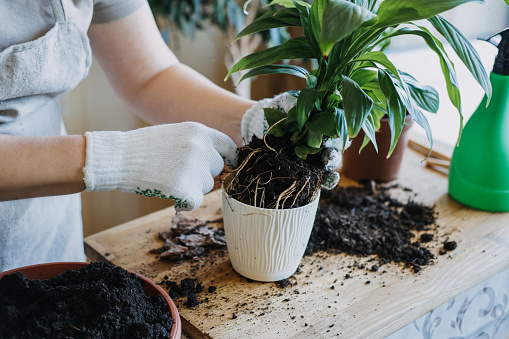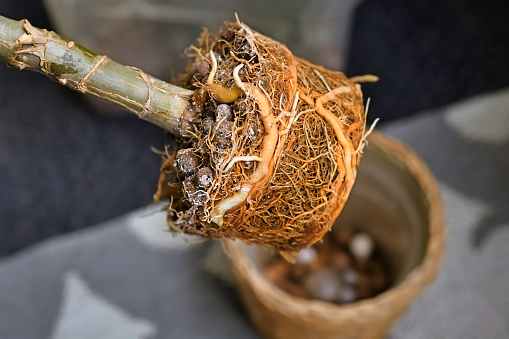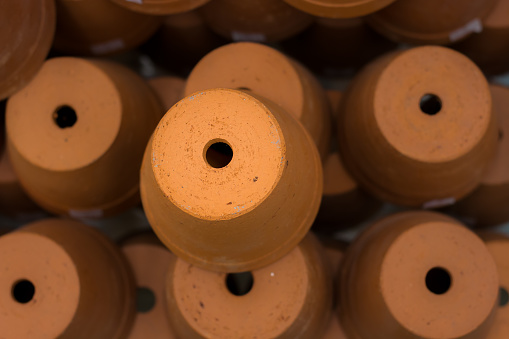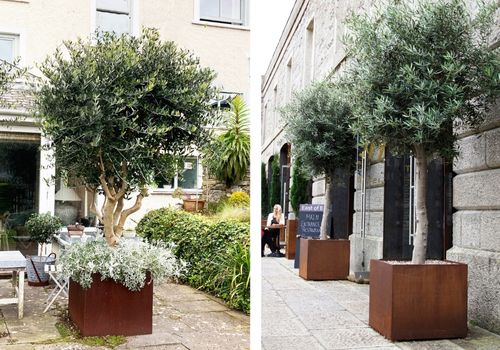Pot Size Guide
Repotting Guide: Finding the Perfect Pot

Just as people outgrow clothes, plants outgrow their pots. It’s a job you don’t need to do very often, but your plants will thank you for it.
When Should I Repot?
Here are some common signs that a plant needs a larger container or fresh compost nutrients:
-
A noticeable decrease in compost level or quality (compost level has dropped over time or appears dry and hard)
-
Roots can be spotted spreading out of the bottom of the pot.
-
Plant dries out suspiciously fast and requires frequent watering.
If your plant is showing these signs, it will need to be repotted to avoid the plant becoming root bound.

If a plant becomes root bound, there will be less water available for the plant, less nutrients and there will be a build up of waste product toxins and new root growth will be restricted inhibiting plant growth. The soil can then become stagnant and anaerobic, thus making oxygen unavailable to the roots.
Although you can repot at any time, the best time to repot your plant is during the springtime, this is the most important time for new growth which will continue into the summer.
Size
A common misconception is the larger the pot the bigger the plant will grow. This is not true as most plants actually prefer a snugger fit.

As a general rule, increase the size inch by inch. Most pots fit loosely into a system used in the horticulture industry that goes by 5cms: 5cm, 10 cm, 15 cm, 20 cm and up. These may or may not be the exact measurements, but most pots are grouped into these categories.
For example, if the container size is 15 cm wide, you will need to size up to an 20 cm pot. To be sure, you can measure the current pot size and bring a measuring tape with you when purchasing a new pot.
Drainage
It’s always better to buy a pot with drainage holes.
This will allow excess water to flow through the roots and out the bottom instead of settling in the bottom of the pot preventing the soil from becoming waterlogged. This is especially important for plants that don’t need a lot of water, like succulents. Remember to place a saucer under the pot.
Drainage holes can also help prevent salt building up in the soil, since water flowing out of the hole will take the extra salt with it. As most plants won’t tolerate soggy, salty soil, it’s always best to plant in pots with at least one drainage hole.
Replenishing Compost
Another reason to repot is if your plant needs fresh compost. Avoid using the old compost when you repot and don’t use soil from outdoor areas.
There’s a huge difference between potting compost and the scruffy soil in your garden. Outdoor soil can contain pathogens and is heavier than potting soil so air can't travel well and it retains water for longer, which can lead to root rot.
Recommended Planter Types
Now you’re ready to choose a new pot or planter, right?
Well, before you go, here is one last thing to consider. What is the planter made of?
We recommend going porous. Porous ceramics like terracotta will dry more evenly.
If weight is an issue, we would recommend fiberglass planters are for plants 20cm or larger in diameter.

Other stylish planters that we use in our own designs include, Corten planters and old iron stone.
Check out our eclectic range of pots and planters and get crafty. Horticulture is as much an art as it is a science.
Your name *











